Franchising, retail, business
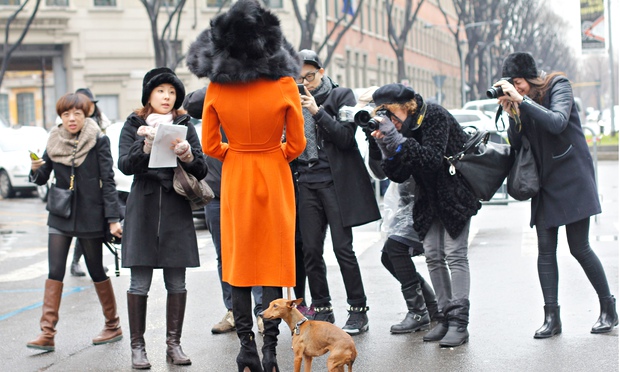
11/08/2014
Photographers have grown weary of the ‘peacocks’ posing outside catwalk shows. Now fashion bloggers are pointing their lenses elsewhere to find authentically interesting looks
In 2013, legendary style editor Suzy Menkes published an essay titled “The circus of fashion” in the New York Times. In it, she nailed the backlash against the crowds who hang around outside various fashion weeks, suggesting that they – the stars of street style – were eclipsing what was happening on the catwalks. “We were once described as ‘black crows’,” she wrote, “but today, the people outside fashion shows are more like peacocks than crows.”
Of course, this wasn’t the first time someone had suggested street style had reached critical mass. A few months later, fashion photographer Garance Doré would tell Elle: “What we call street style isn’t actually street style at all, it’s fashion-week style.” It was clear that if street style were to survive, it would need to evolve.
And evolve it has. Welcome to Peep Style, a subversive approach to street style, driven by a hunger for a more candid, authentic approach, which focuses on capturing real people in real clothes and – this is key – who aren’t necessarily posing.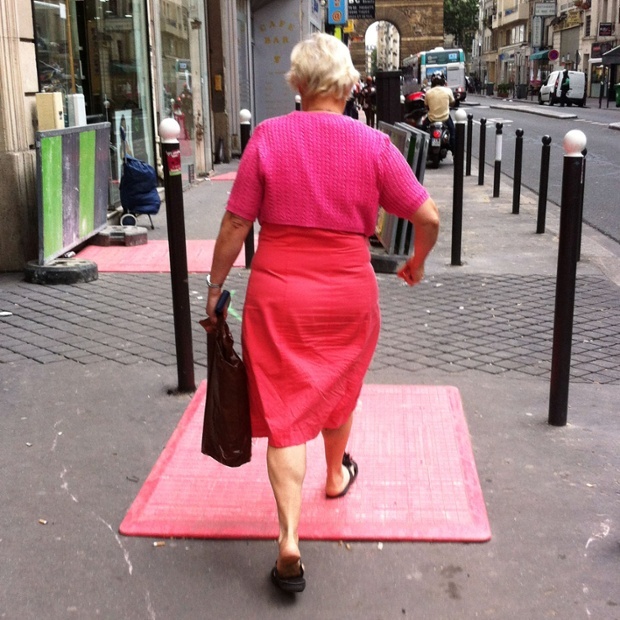 Pioneering the genre is French-American fashion photographer, David Luraschi (@DavidLuraschi),. Dubbed by insiders the “sartorialist of sadness”, he avoids posed shots, choosing instead to shoot his subjects (all genders, all ages) from behind, achieving a Martin Parr level of realism, and post the results on Instagram.
Pioneering the genre is French-American fashion photographer, David Luraschi (@DavidLuraschi),. Dubbed by insiders the “sartorialist of sadness”, he avoids posed shots, choosing instead to shoot his subjects (all genders, all ages) from behind, achieving a Martin Parr level of realism, and post the results on Instagram.
“I work within the fashion world, and I understand that street style is embedded within it,” he says. “But to me, style is something else – it might be a colour, or it might be an attitude or a dialogue. I have nothing against it [street style], but there’s something about someone posing that removes the naturalness.”
Luraschi is one of several photographers increasingly noted for their realistic. LA-based phototgrapher Alkistis Tsitouri has been practising street-style photography since 2008. She actively avoids the “peacocks” and agrees that street style has become an epidemic: “If I go to New York during fashion week, I don’t want to fight with other photographers for one click of some ‘street style superstar’.”
At the far end of the spectrum is London-based photographer Alex Sturrock (@alexsturrock), who guns for the most everyday people he can find: “What people choose to wear says a lot about them, but it’s not a complete story,” he says. “When I do street portraiture, someone’s face is probably the most important thing and clothes can even be a real distraction.” His subjects “are not trying to solicit the camera’s attention or create a contrived image”.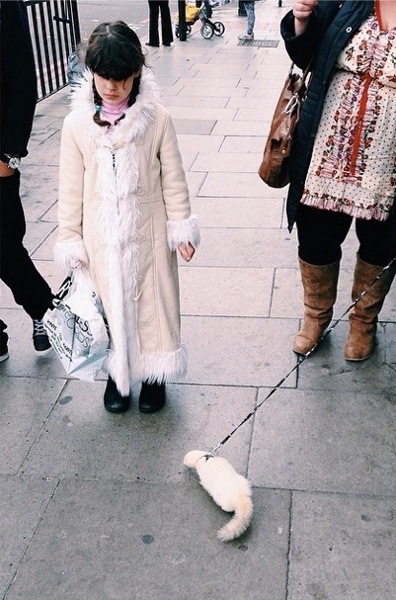 Street-style photography became popular in the 70s, pioneered by New York Times photographer Bill Cunningham, but it wasn’t until the mid noughties that it really gained recognition. Since then, its explosion has been fairly swift, with hugely influential blogs such as The Sartorialist launching in 2005 and photographers such as Yvan Rodic, Tommy Ton and Philip Oh being commissioned to photograph street style for the glossies.
Street-style photography became popular in the 70s, pioneered by New York Times photographer Bill Cunningham, but it wasn’t until the mid noughties that it really gained recognition. Since then, its explosion has been fairly swift, with hugely influential blogs such as The Sartorialist launching in 2005 and photographers such as Yvan Rodic, Tommy Ton and Philip Oh being commissioned to photograph street style for the glossies.
For a long time, editorial photography and street-style photography happily co-existed. Then a faultline appeared. For Brent Luvaas, an American academic who specialises in the connection between street style and anthropology – the problem began “when they started photographing people outside shows instead of real people on the street”.
Luvaas runs Urban Fieldnotes, a meta street-style blog about the way we photograph street style, as part of an ongoing project about its evolution. “Street style used to be about documenting real fashion – it was meant to be alternative to magazine fashion. But then it started to require shooting the kinds of people the readers of fashion publications were interested in, and that turned out to be more the insiders than everyday people.”
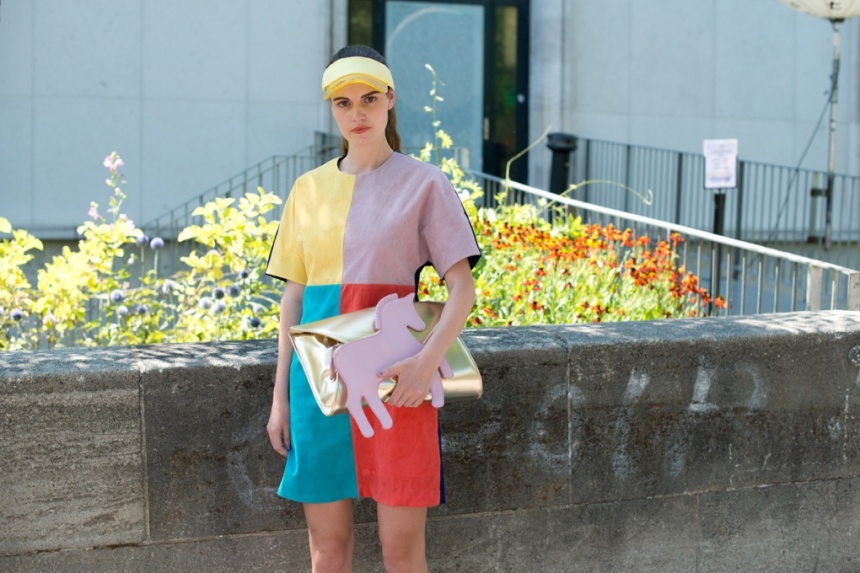 For Luvaas, the cannibalism of street style began five years ago: “The great thing about street-style blogs is that you have an archive of fashion for the past 10 years that isn’t solely editorial based. However, what is apparent is that since 2009, if you search for street style, all that comes up is fashion week.”
For Luvaas, the cannibalism of street style began five years ago: “The great thing about street-style blogs is that you have an archive of fashion for the past 10 years that isn’t solely editorial based. However, what is apparent is that since 2009, if you search for street style, all that comes up is fashion week.”
Now, street style has arguably peaked. Part of the backlash stems from the fact that (to borrow from Menkes) the “peacocks” now outweigh the “black crows” and that some fashion week attendees resent being fair game to photographers when they are trying to do their job; a sort of “passive consent”. Luraschi blames selfies for rendering street style redundant, and making us more wary of it: “That problem of narcissism has always existed – but now we are overwhelmed with the amount of output online. It sort of makes you not like people.”
Katherine Ormerod, senior fashion news and features editor at Grazia, agrees that street style has had an “immeasurable” impact on the way her peers dress: “You can’t just wear a black jacket and jeans – you want to look visually engaging for the reader.” Although she doesn’t feel resentful: “We all still dress like ourselves, just with a little more vim.”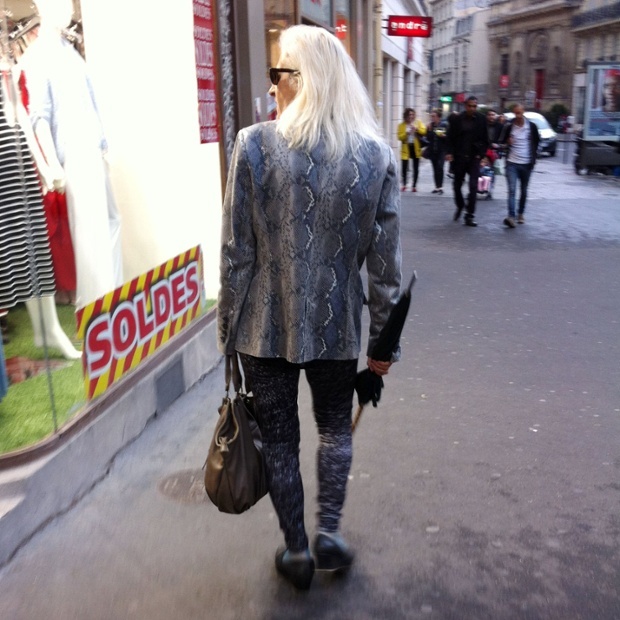 As a result, it’s become impossible to define street style in the historical sense because arguably, it no longer exists. At fashion weeks at least, people dress to be photographed: “If you go to certain streets in New York’s SoHo, there is a chance that you will be photographed – you see bloggers hang out together in gangs of four or five,” says Luvaas. For many fashion types, if you’re not photographed then you don’t exist.
As a result, it’s become impossible to define street style in the historical sense because arguably, it no longer exists. At fashion weeks at least, people dress to be photographed: “If you go to certain streets in New York’s SoHo, there is a chance that you will be photographed – you see bloggers hang out together in gangs of four or five,” says Luvaas. For many fashion types, if you’re not photographed then you don’t exist.
What photographers such as Luraschi and Sturrock are producing may not seem to be fashion-focused, but they are capturing the essence of what street style used to be.
Some would argue that the backlash stems from our desire to react against fashion, an attitude reflected by the normcore trend: in order to stand out, you have to blend in: “It is extremely hard to protect your unique look in street-style culture,” agrees Ormerod. “The only way you can do that is by failing to pique the photographers’ interest.” So maybe at the next round of fashion weeks, the black crows will find themselves the subject of the photographer’s lens, whether they like it or not.